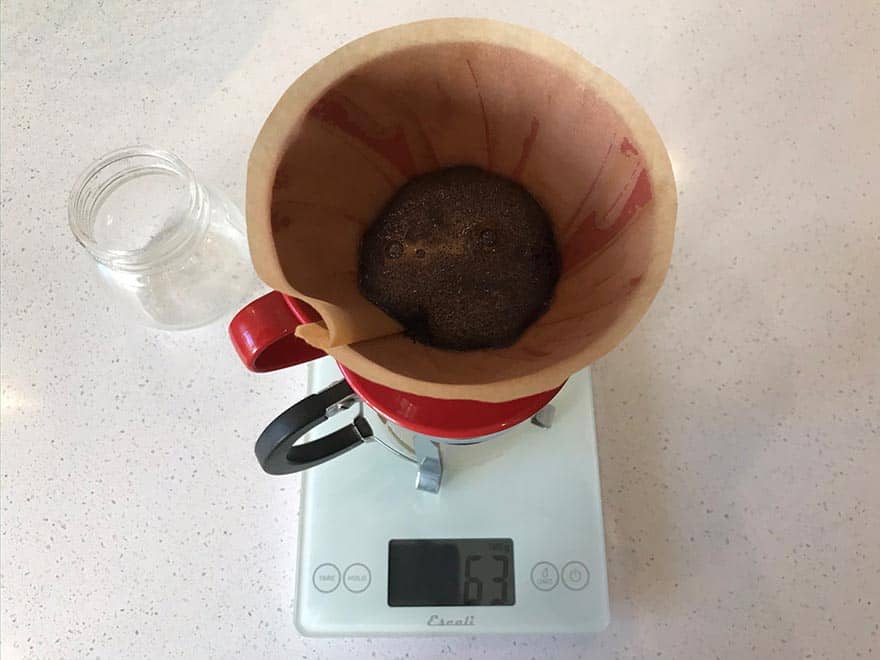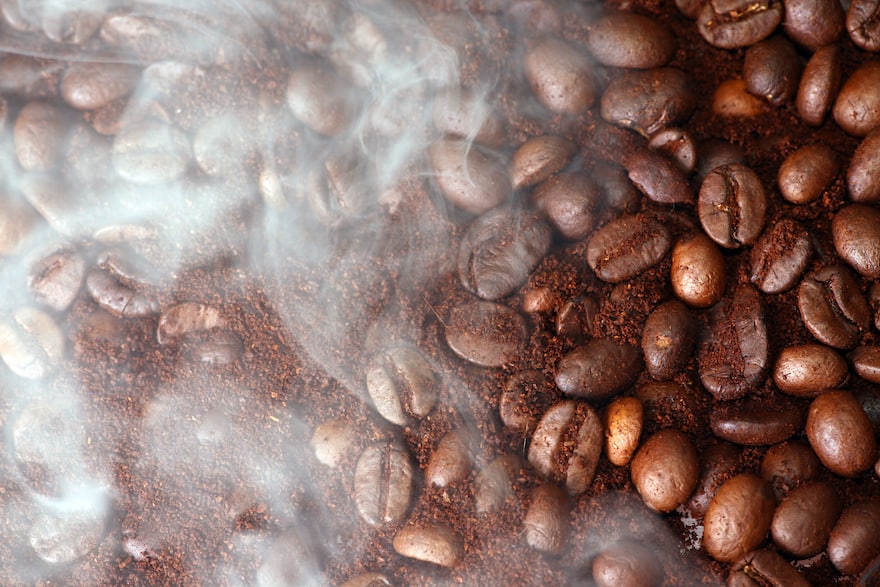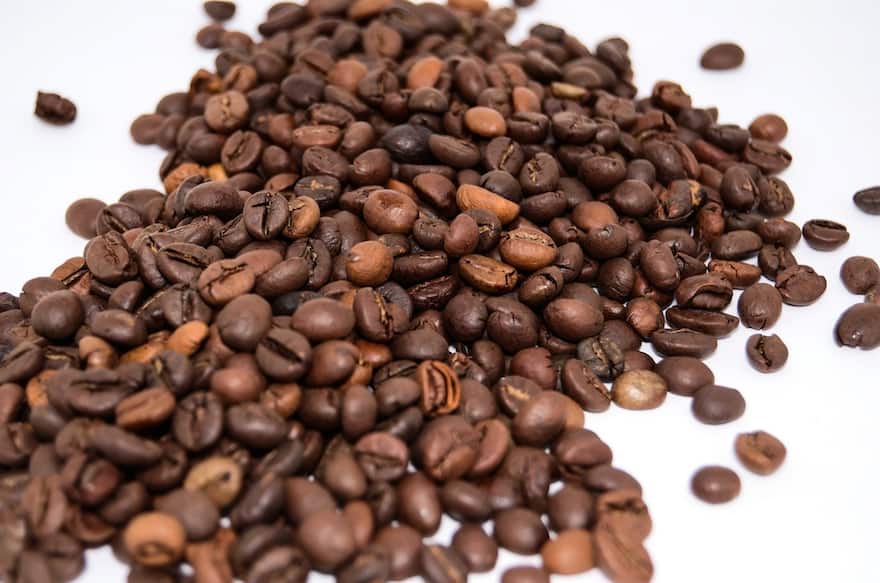Just so you know, as an Amazon Associate we earn from qualifying purchases made via bold red links, buttons or images.
Last Updated on December 27, 2023
If you’re anything like me, the concept of degassing coffee was probably a bit confusing when you first heard it.
Freshly roasted coffee is supposed to be best, right? You’re supposed to keep it in airtight containers so the complex flavor and aroma compounds don’t degrade over time.
How on earth can coffee be TOO fresh?
I will explain.
Right after roasting, the roasted bean is full of carbon dioxide that has formed during the roasting process.
If you brew your coffee right away, this carbon dioxide will release when it meets hot water for the first time. You may have seen your coffee grounds bubble up during “blooming.” This is gas escaping your ground coffee.

Unfortunately, the release of carbon dioxide interferes with the extraction process that is supposed to create great coffee. Uneven extraction can result in a flat-tasting cup.
This effect is even more pronounced when making espresso, because it has such a brief extraction time.
Degassing involves letting your roasted coffee beans rest for a few days, so any gas built up during roasting is released into the air rather than your cup. It’s a balancing act. You don’t want to wait too long, because the presence of some carbon dioxide in your beans is a big indicator of freshness.
Thankfully, degassing is easy. If your coffee beans are packed in a bag with a one-way valve, you can just leave them on the counter in the bag. If you roasted your own, look for a degassing container that blocks out light and oxygen while still allowing the gas to escape. We have a recommendation at the bottom of this post.
How Long Should You Degas?
Degassing time depends on the roast, and the brew method.
If you prefer a light roast, it will take longer to degas than a dark roast. This is because the bean is more intact, so there are fewer cracks from which the carbon dioxide can escape. You may be looking at up to a week for lighter roasts, or for brewing methods with quicker extraction times such as espresso.
With espresso, you’ll get the best extraction anywhere from seven to 12 days after roasting.
With darker roasts, much of the gas will be lost in the first few hours after roasting. You can get the full flavor of a dark roast in a French press just 72 hours after roasting.
If you buy freshly roasted coffee, you can learn the ideal degassing time simply by brewing a cup every day and taking note of how many days it takes to reach your best cup. Then you’ll have that information whenever you buy that roast again.
Every coffee is different, though, so you’ll need to do it with each new coffee you buy.

Keep in mind that ground coffee degasses more quickly than whole beans, but it also goes stale more quickly.
You don’t want stale coffee, so for the best cup possible, let your coffee degas whole and then grind the beans right before you intend to brew.
Degassing Time for Different Brewing Methods
| Method | Recommended time |
|---|---|
| Espresso | 7-12 days |
| AeroPress | 2-7 days |
| Pour over/drip | 2-7 days |
| French press | 2 days |
How To Find Out If Your Beans Are Still Degassing
The easiest way to test whether your coffee has finished degassing is to pop some beans into a resealable plastic bag. Squeeze out all the air and leave the bag overnight. If the bag puffs up, the degassing process is still under way—no matter how many days off roast you are.
Degassing Containers
Most store-bought coffee is shipped in bags with one-way degassing valves that will let out carbon dioxide without letting in oxygen. It’s the button-like thing on the side of the coffee bag. The coffee is usually degassed by the time you get it.
Buying fresh from the local roaster is different. Storage becomes an important factor. Anything fully airtight will trap the carbon dioxide.
Look for a container with a degassing valve like the Coffeevac V. This will let you seal up your coffee immediately after roasting.
Professional Series 1 lb Coffeevac V with Degassing Valve, Black
If you can’t get your hands on one of these, then just use any airtight container and leave it unsealed for at least the first 24 hours. Return a couple of times over the next day to open the container and let out any carbon dioxide. Keep it brief, because you will also be letting in oxygen and oxygen is one of coffee’s enemies.



